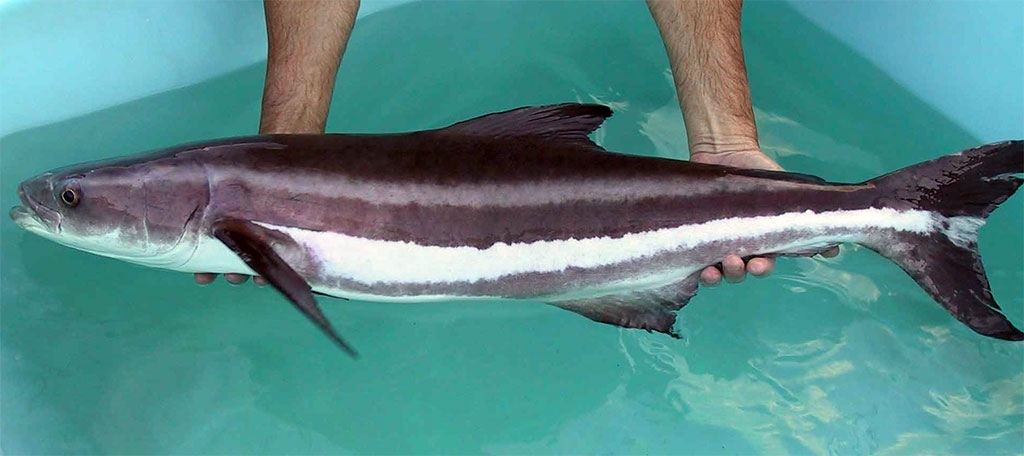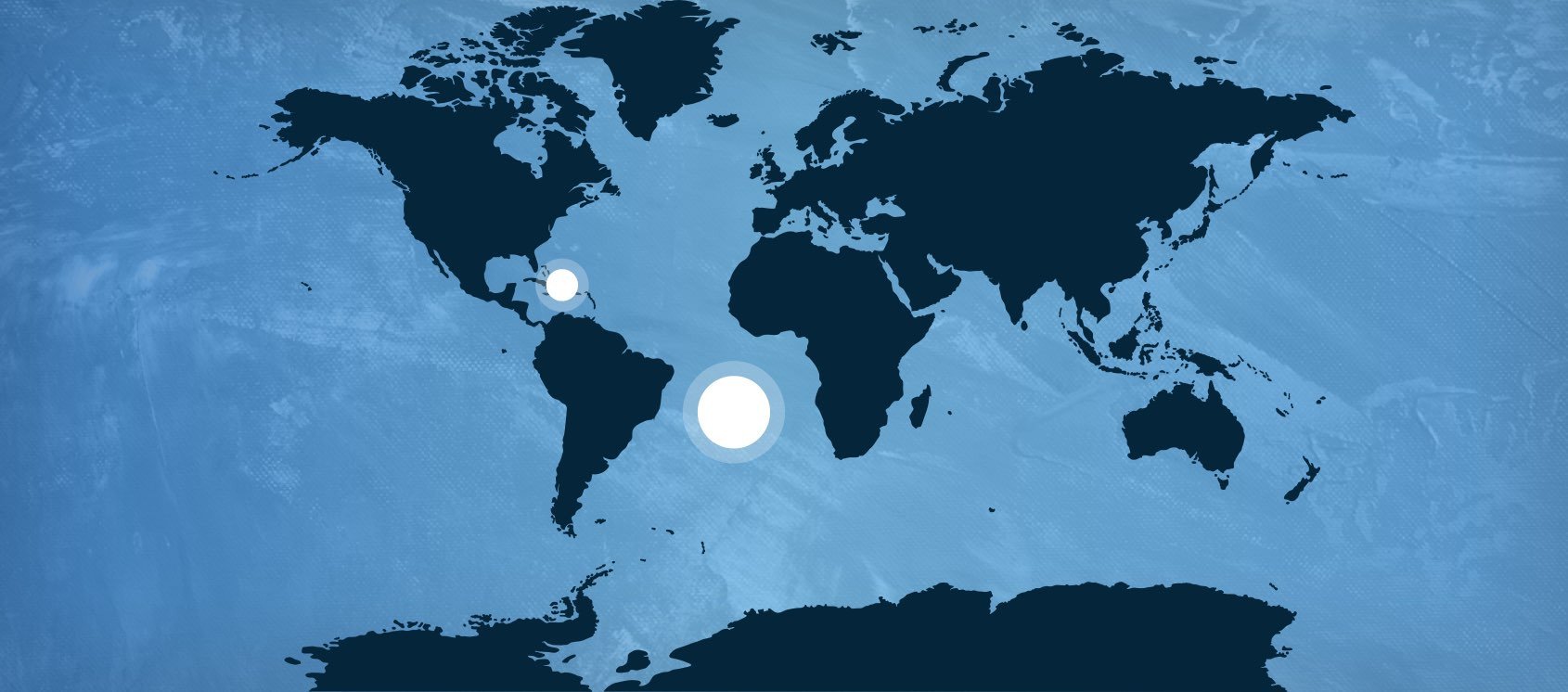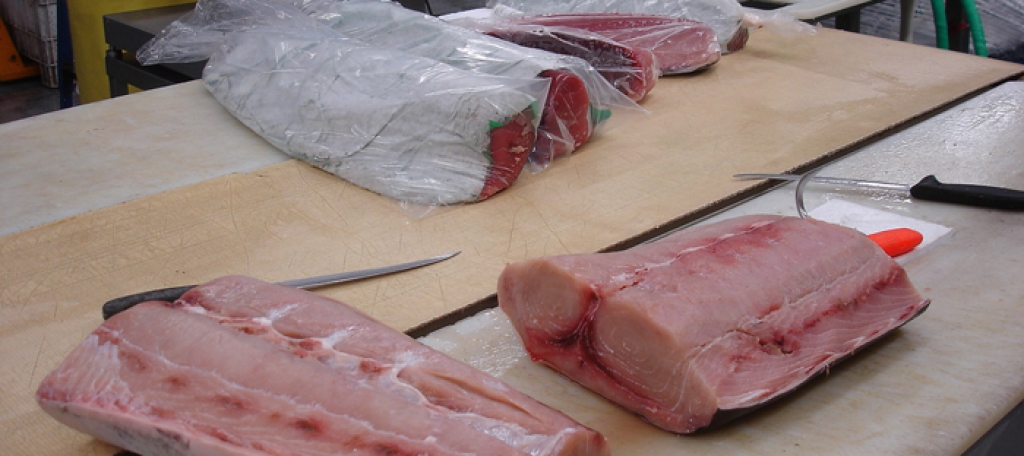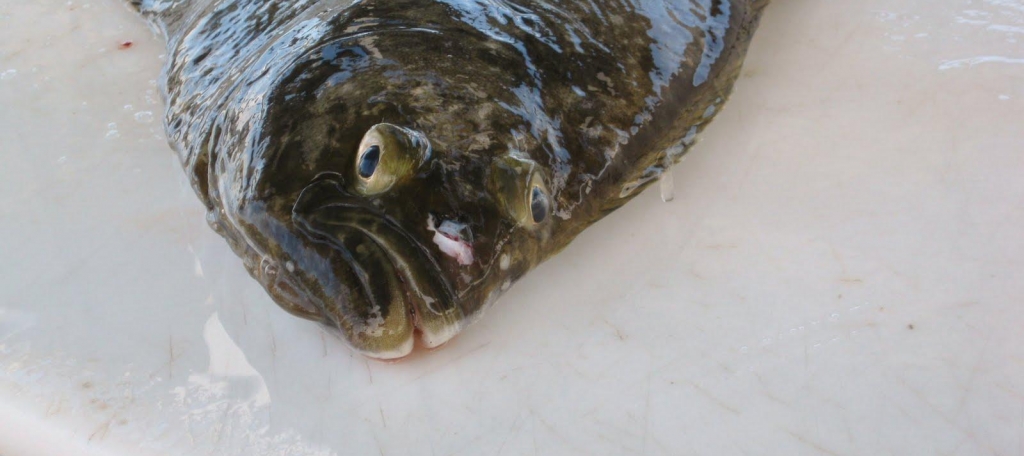
Lemonfish Panama
Firm flesh with a rich succulence and clean finish.
Firm, Rich, Moderate, Clean
Quick Facts
Commonly Known As:
Lemonfish, Crab Eater, Black Salmon, Black Kingfish
-
Species Name
Cobia
-
Latin Name
Rachycentron canadum
-
Origin
Costa Arriba, Panama (Open Ocean)
-
Harvest Method
Net Caught
-
Range & Habitat
South Atlantic & Caribbean
-
Producer

Range & Habitat
Open Blue
In order to keep up with the growing human population, more food will have to be produced in the next 50 years than during the past 10,000 years combined. 100 times more production per acre is possible with aquaculture than traditional agriculture, creating the opportunity to meet the growing human demand. Now, more than ever, it is necessary to continually innovate our aquaculture technologies in order to meet the growing needs of the world’s population while remaining environmentally conscious.
Open Blue is the culmination of nearly a decade of cutting edge investigative research on deep ocean aquaculture in collaboration with the world’s leading scientific laboratories and universities. Founder Brian O’Hanlon is an open ocean aquaculture expert who has achieved several milestone successes in sustainably cultivating new species of marine fish and pioneering methods of open ocean operation. Brian developed the second private open ocean farm site located in US waters, was the first to introduce fresh farm raised cobia to the US market and was the first to produce cobia in commercial quantities in open ocean submerged cages.
By using innovative, open ocean aquaculture technology, Open Blue has moved fish farming into the deep sea. Our farms are carefully located, far from shore and sensitive ecosystems. We purposely avoid areas commonly used for artisanal fishing, recreation, conservation and navigation. We refuse to crowd our fish at high densities in small cages, tanks or ponds. Instead, we give them plenty of room in very large, stress-free, deep-water net pens.
Open Blue’s deep ocean aquaculture methods can sustainably scale with the growing seafood demand without harming our environment, the oceans or sea life. The open ocean is a high-energy environment where the water is pure and pristine, and our fish never see the same water twice. This approach enhances the surrounding environment, lowers the risk of disease and provides a more humane and natural growing environment for fish. This translates into guilt-free, high-quality, safe, healthy and sustainably cultivated seafood.
http://www.openblue.com/open-ocean-raised/our-process/
You Might Also Like These
Located in the Australian sub-Antarctic territory around Heard Island, a staggering 4,109 km from mainland Australia, Fiftyone Glacier inches into the surrounding icy waters of the storm tossed Southern Ocean. It is this extraordinary environment that is home to the highly prized Patagonian Toothfish

8 oz Swordfish Portions Southern Atlantic Portions packed in 5 lb map otr trays Price quote range per lb with seasonal availability and cap. Minimum air freight order is a 15 lb box. Any order under 15lbs will have a $29.95 shipping charge added to the invoice.

Paper White, Mild, Flakey, Moist
California Halibut falls comfortably between Alaskan Halibut and Large Summer Flounders. That gives it a well recognized marketability to anyone across the country and beyond. The California Halibut have wide thick fillets that are perfect for high heat cooking methods. California Halibut stand alone in the Halibut realm as a light, delicate and clean flesh that works in a multitude of applications. A favorite in Ceviche, the California Halibut has the moisture content to stay creamy, but lower fat contents to keep the Ceviche clear. It also has a great propensity for buttery sauces, vinaigrettes, gastriques, and broths.